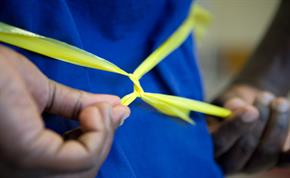
An incident has occurred recently, not in our service, where an in-line (or closed) suction catheter was left in the endotracheal tube (ET tube) by mistake. When the ET tube was cut to reduce the dead space, the suction catheter was also cut and the tip remained in the ET tube. The incident was not noticed for several days and during this time the tip of the suction catheter migrated into the patient’s main bronchus. The tip was identified on a chest X-ray and subsequently removed by bronchoscopy.
Eight additional incidents describing retained suction tips have been reported to the NRLS, STEIS and the MHRA since 1st January 2012. These cases involved neonates and adult patients and appear to have resulted in moderate harm. However, there is potential for serious harm because of the risk of infection and, especially in unstable patients, the undertaking of an invasive procedure to retrieve the foreign object.
Local investigations have identified the following:
Leaving a suction tube inside the ET tube is poor clinical practice and may restrict ventilation. It poses a particular risk if the ET tube is to be cut for any reason. Following suction, the catheter must be withdrawn according to manufacturer’s instructions and this procedure should be reflected in local guidelines and training material.